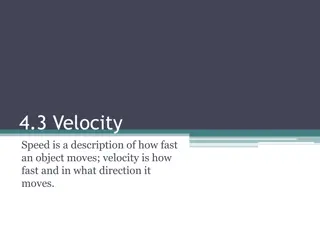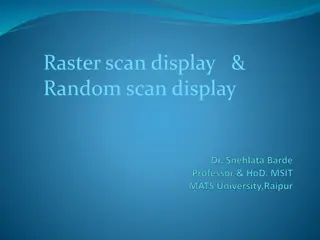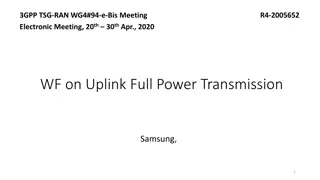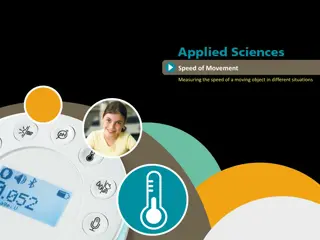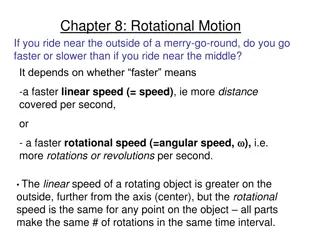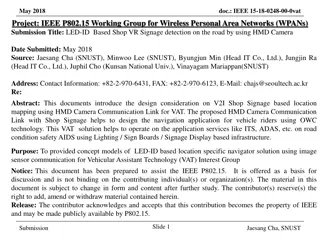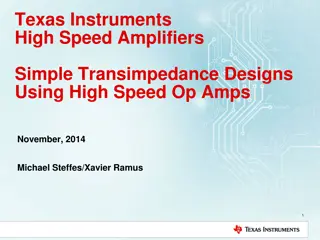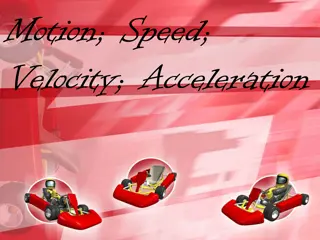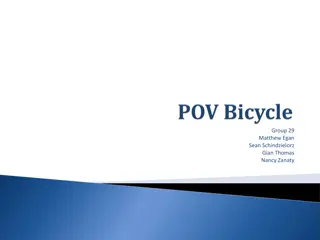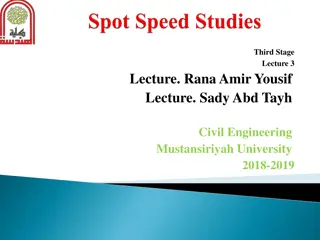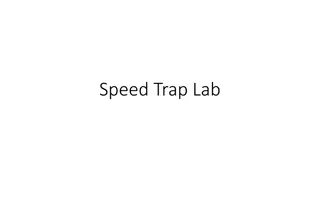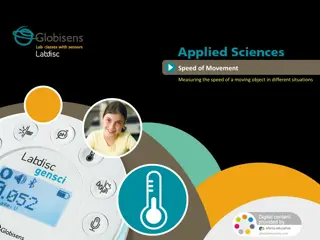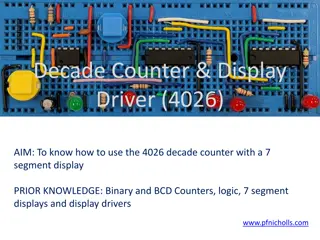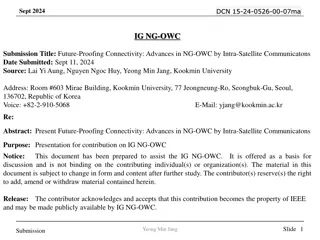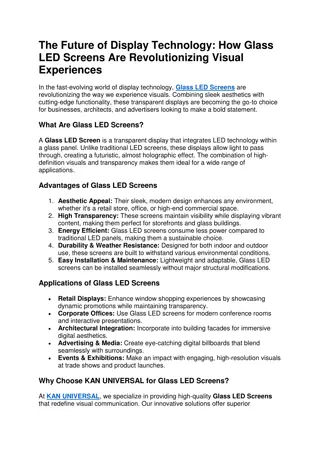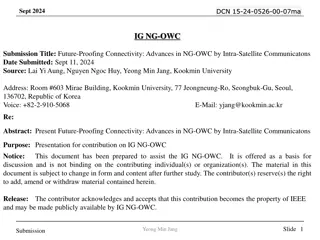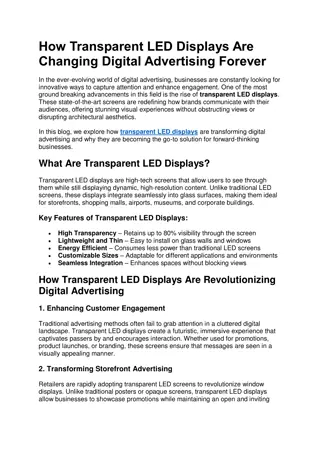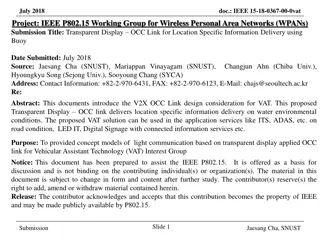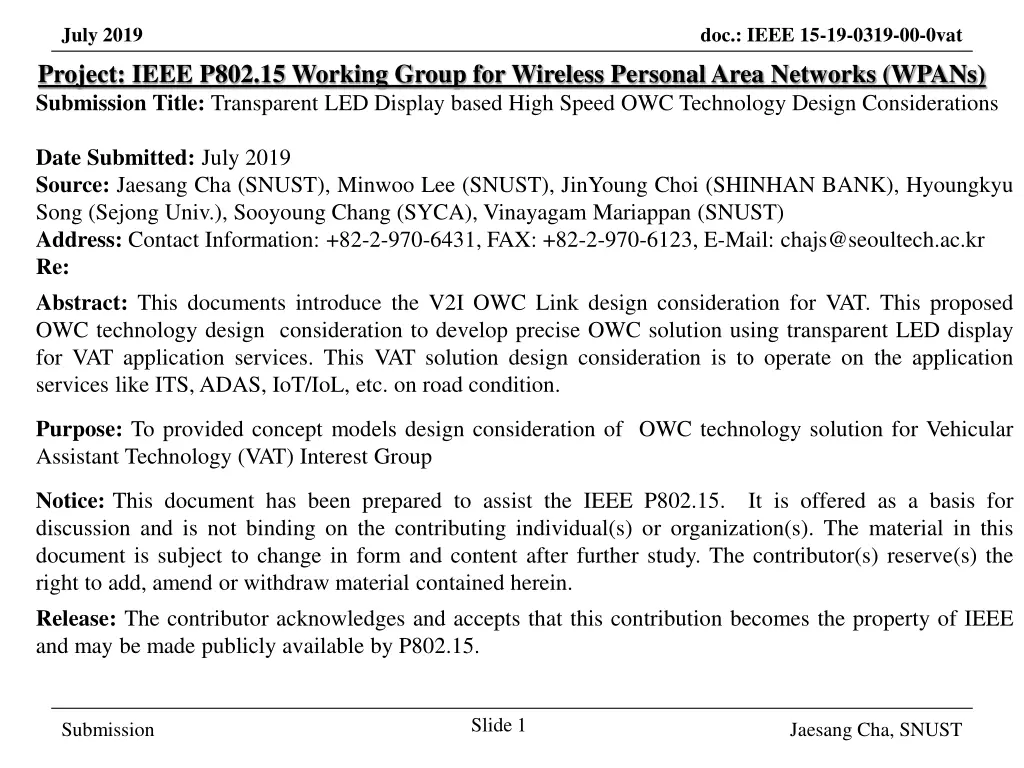
LED Display Technology Design Considerations for Vehicular Assistant Applications
Explore design considerations for a high-speed Optical Wireless Communication (OWC) technology utilizing transparent LED displays in Vehicular Assistant Technology (VAT) applications. The document discusses issues, solutions, and required design considerations for implementing LED and camera-based OWC links for VAT services like ITS, ADAS, and IoT on road conditions.
Download Presentation

Please find below an Image/Link to download the presentation.
The content on the website is provided AS IS for your information and personal use only. It may not be sold, licensed, or shared on other websites without obtaining consent from the author. If you encounter any issues during the download, it is possible that the publisher has removed the file from their server.
You are allowed to download the files provided on this website for personal or commercial use, subject to the condition that they are used lawfully. All files are the property of their respective owners.
The content on the website is provided AS IS for your information and personal use only. It may not be sold, licensed, or shared on other websites without obtaining consent from the author.
E N D
Presentation Transcript
July 2019 Project: IEEE P802.15 Working Group for Wireless Personal Area Networks (WPANs) Submission Title: Transparent LED Display based High Speed OWC Technology Design Considerations doc.: IEEE 15-19-0319-00-0vat Date Submitted: July 2019 Source: Jaesang Cha (SNUST), Minwoo Lee (SNUST), JinYoung Choi (SHINHAN BANK), Hyoungkyu Song (Sejong Univ.), Sooyoung Chang (SYCA), Vinayagam Mariappan (SNUST) Address: Contact Information: +82-2-970-6431, FAX: +82-2-970-6123, E-Mail: chajs@seoultech.ac.kr Re: Abstract: This documents introduce the V2I OWC Link design consideration for VAT. This proposed OWC technology design consideration to develop precise OWC solution using transparent LED display for VAT application services. This VAT solution design consideration is to operate on the application services like ITS, ADAS, IoT/IoL, etc. on road condition. Purpose: To provided concept models design consideration of OWC technology solution for Vehicular Assistant Technology (VAT) Interest Group Notice: This document has been prepared to assist the IEEE P802.15. It is offered as a basis for discussion and is not binding on the contributing individual(s) or organization(s). The material in this document is subject to change in form and content after further study. The contributor(s) reserve(s) the right to add, amend or withdraw material contained herein. Release: The contributor acknowledges and accepts that this contribution becomes the property of IEEE and may be made publicly available by P802.15. Slide 1 Submission Jaesang Cha, SNUST
July 2019 doc.: IEEE 15-19-0319-00-0vat Contents Issue in Display based OWC Solution Required Design Considerations for Transparent LED Display Conclusion Slide 2 Submission Jaesang Cha, SNUST
July 2019 doc.: IEEE 15-19-0319-00-0vat Issue in Display based OWC Solution Issues in Display based OWC Technology Camera Calibration Motion Stabilization RoI Selection Interpixel Interferences Fast 2D Color Decoder Camera Sampling Rate and Frame Rate Variations Fast Synchronization Method Solutions Adaptive Image Processing Methods like Machine Learning, Machine Learning, AI, etc. Sampling and Frame variation controller using Spread Spectrum Synchronization Using Spread Spectrum Adaptive Denoising Methods like Region Pixel Adaptive < LED based Transparent Display Media Samples > Filtering Methods Slide 3 Submission Jaesang Cha, SNUST
July 2019 doc.: IEEE 15-19-0319-00-0vat Required Design Considerations for Transparent LED Display (1) Adaptive Camera Calibration and Image Stabilization Method Lucas Kanade method regarding image patches and an affine model for the flow field Horn Schunck method optimizing a functional based on residuals from the brightness constancy constraint, and a particular regularization term expressing the expected smoothness of the flow field Buxton Buxton method based on a model of the motion of edges in image sequences Black Jepson method coarse optical flow via correlation Adaptive Imaging Method for RoI Detection Method Optical Flow Machine Learning Deep Learning AI, etc. < LED and Camera based OWC Link Decoding Flow > Slide 4 Submission Jaesang Cha, SNUST
July 2019 doc.: IEEE 15-19-0319-00-0vat Required Design Considerations for Transparent LED Display (2) Noise and Interference Minimization Techniques Adaptive Optical Image Filter Adaptive Infrared filter Robust modulation techniques Robust Modulation Techniques With Multi Level, Sub-Carrier Multiplexed Techniques, Spread Spectrum Techniques Multilevel PPM Sub-carrier multiplexed (SCM) PPM DSSS SIK (Direct-Sequence Spread Spectrum with Sequence Inverse Keying) VTASC SS2DC < LED and Camera based OWC Link Decoding Flow > Slide 5 Submission Jaesang Cha, SNUST
July 2019 doc.: IEEE 15-19-0319-00-0vat Conclusion Discussed the OWC technology design consideration to develop precise OWC solution using transparent LED display for VAT application services. Issues in Display based OWC Technology Camera Calibration, Motion Stabilization, RoI Selection, Interpixel Interferences, Fast 2D Color Decoder, Camera Sampling Rate and Frame Rate Variations, Fast Synchronization Method, etc. Provided the required considerable techniques for display based OWC technology like Adaptive Camera Calibration and Image Stabilization Method, Adaptive Imaging Method for RoI Detection Method, Noise and Interference Minimization Techniques, Robust Modulation Techniques. Slide 6 Submission Jaesang Cha, SNUST

